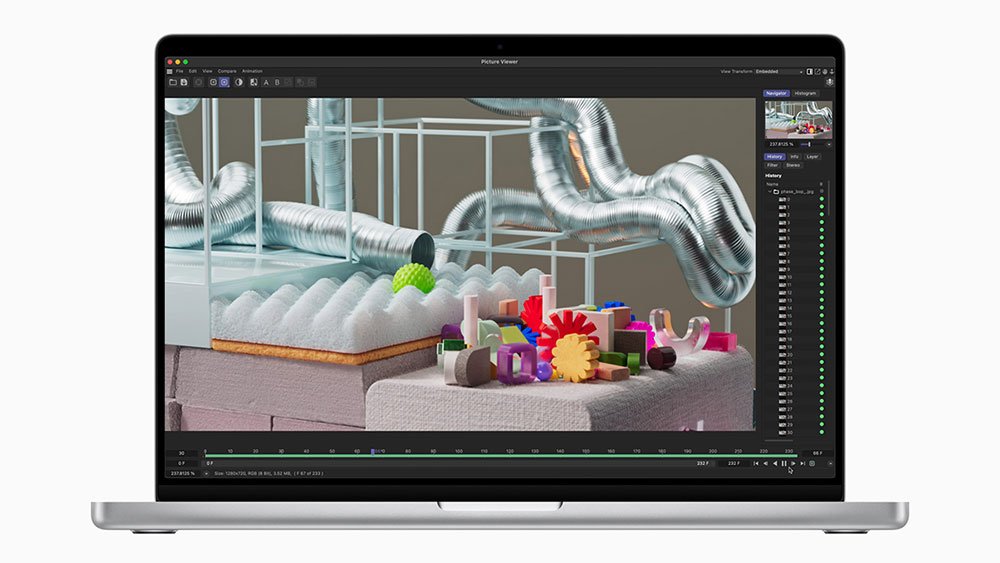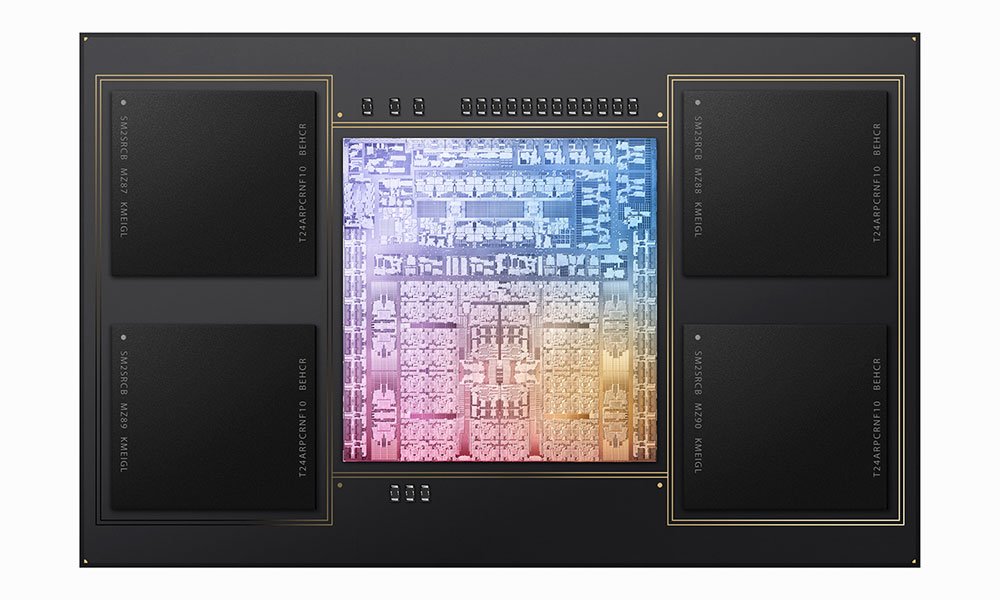Introduction:
In a bold move that reaffirms Apple’s dominance in the competitive processor landscape, the tech giant has introduced its latest M3 chip series. The announcement, made during a meticulously produced online event, highlights significant performance and power management enhancements compared to previous silicon generations. This development is poised to impact the premium laptop market, particularly with the incorporation of these cutting-edge processors into the MacBook Pro series and iMac desktops.
 Key Features of the M3 Chip Series:
Key Features of the M3 Chip Series:
Apple’s M3 processor, equipped with an 8-core CPU, a 10-core GPU, and support for up to 24GB of unified memory, stands out as a remarkable advancement. Notably, the M3’s CPU boasts a 35% improvement over its predecessor, the M1, while the GPU exhibits an impressive 65% increase in performance. For users seeking even more power, Apple introduces the M3 Pro and M3 Max variants, each offering enhanced capabilities and memory support.
Performance Comparison:
The M3 series doesn’t just stop at raw power; it also introduces an upgraded neural engine, claiming a 60% increase in speed compared to the M1 series. Apple strategically positions these advancements by drawing comparisons with earlier models, prompting discussions about potential upgrades for existing M2 MacBook users.
Competition Analysis:
Apple’s announcement comes amidst Qualcomm’s unveiling of the Snapdragon X Elite platform, raising questions about how the M3 series measures up against this competing chip. While Qualcomm touts impressive specifications, experts suggest that real-world performance benchmarks will be crucial in determining the true superiority between the M3 and Snapdragon X Elite.
 Market Impact and Pricing:
Market Impact and Pricing:
The revelation of Apple’s groundbreaking M3 chip series isn’t merely a technological leap; it’s a strategic move that will undoubtedly reverberate across the market landscape. As consumers eagerly anticipate the enhanced capabilities promised by these processors, Apple has strategically positioned its pricing and market approach to ensure a substantial impact.
Premium Positioning: The M3 MacBook Pro and iMac models, starting at $1,599 and $1,299 respectively, underscore Apple’s commitment to maintaining a premium positioning in the market. By aligning these devices with a higher price point, the tech giant is signaling that the M3 series isn’t just an incremental upgrade but a significant leap in performance and functionality.
Perceived Value vs. Cost: The pricing strategy appears to balance the perceived value of the M3 series with its associated costs. Apple, known for its meticulous craftsmanship and seamless integration of hardware and software, aims to justify the premium pricing by delivering a user experience that transcends conventional expectations. This approach seeks to position the M3-powered devices as not just technological tools but as lifestyle accessories that offer unparalleled performance.
Competitive Dynamics: While Apple is known for its premium pricing, the M3 series faces competition not only from rival chip manufacturers but also within Apple’s own product lineup. The pricing structure may lead potential buyers to weigh the performance gains of the M3 against existing models, such as those featuring M1 or M2 chips. This dynamic adds an interesting layer to consumer decision-making, as Apple strategically compares the M3 against its predecessors, subtly influencing upgrade considerations.
Market Segmentation: By introducing a tiered lineup with M3, M3 Pro, and M3 Max variants, Apple caters to diverse consumer needs and budget considerations. This segmentation enables the company to tap into different market segments, offering a range of options based on performance requirements and affordability. The M3 Max, with its 16-core CPU and 40-core GPU, particularly targets power users and professionals who demand top-tier specifications.
Strategic Timing: The unveiling of the M3 series couldn’t have been more timely, aligning with the holiday season and capitalizing on consumer purchasing patterns. As consumers seek cutting-edge technology for their holiday wish lists, Apple positions itself as the go-to choice for those willing to invest in state-of-the-art computing power.

Addressing Revenue Pressures: Apple’s move to refresh the MacBook and iMac lines with the M3 series addresses the revenue pressures the company has faced in its non-iPhone hardware segment. The premium pricing aligns with Apple’s efforts to recover some of the revenue decline by enticing both existing and new customers to invest in the latest Mac devices.
The iMac Resurgence: The M3 iMac, starting at $1,299, is not just a hardware upgrade; it’s a strategic move to reinvigorate interest in a product that some critics deemed “tired.” By emphasizing the iMac’s refresh with a powerful new chip, Apple aims to stimulate sales and create a surge in demand among consumers who have been holding off on their purchases, anticipating a noteworthy upgrade.
In conclusion, Apple’s market impact and pricing strategy for the M3 chip series showcase a nuanced approach that balances premium positioning with strategic segmentation and timing. As consumers navigate their purchasing decisions, the perceived value of the M3 series, coupled with its competitive pricing, positions Apple to continue its dominance in the ever-evolving tech market.
Strategic Timing and Market Dynamics:
The unveiling of the M3 series aligns strategically with Apple’s goal of revitalizing its MacBook and iMac lines. Amidst revenue pressures for non-iPhone hardware, the timing of this release aims to attract both new and existing customers, capitalizing on the holiday season and addressing the decline in Mac sales.
Transitioning Away from Intel:
While the M3 series is undoubtedly capable of handling artificial intelligence tasks, Apple’s emphasis during the event was on its chips’ superior speed and performance. The overarching theme suggests a gradual shift away from Intel architecture, nudging users towards embracing Apple silicon for an enhanced computing experience.
Conclusion:
With the introduction of the M3 chip series, Apple has once again set a new standard in processor technology, pushing the boundaries of performance and innovation. The strategic timing, combined with competitive pricing and advanced features, positions the M3 series as a formidable player in the premium laptop and desktop market, keeping Apple ahead in the ever-evolving tech landscape.
Read more: